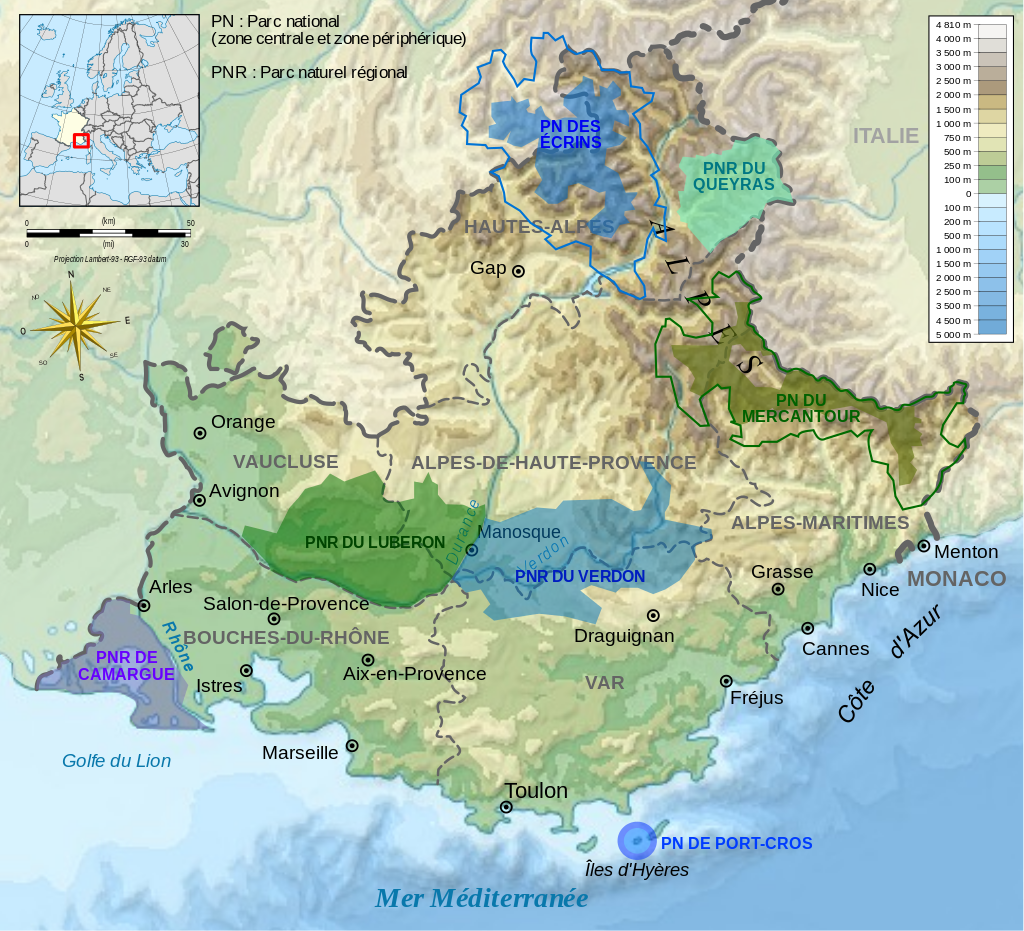Architecture of Houses in the Luberon
The Lubéron , located in the heart of the Provence-Alpes-Côte d'Azur region, is known for its picturesque landscapes and its serene lifestyle. This natural setting, made up of hills, vineyards and hilltop villages, strongly influences local architecture. In this region, the traditional architectural style is distinguished by Provencal bastides , stone farmhouses and village houses with rustic charm.
The architecture of the Lubéron reflects the harmony between man and his environment, and this quest for authenticity attracts an international clientele looking for properties of character . Each village, each house, each estate seems to want to preserve the history and traditions of this region of the south of France.
The Provençal Bastides: Symbol of the Mediterranean Art of Living
Provençal bastides are one of the most emblematic styles of architecture in the Luberon. Historically, these large houses were the residences of wealthy landowners. Today, they have become synonymous with prestige and luxury , while retaining their traditional appearance.
Bastides are generally imposing constructions, with a rectangular structure and red tiled roofs typical of the region. The stone facades give them a robust appearance, while being harmonious with the natural environment. Inside, the spaces are vast, with high ceilings and exposed wooden beams, characteristic of Provençal architecture.
The French gardens or landscaped parks surrounding these bastides add a touch of elegance. Additionally, many of these properties feature swimming pools or interior courtyards lined with cypress and lavender, creating a Mediterranean ambiance ideal for second homes or quiet retreats.
Les Mas Provençaux: Authentic and Functional
The Provençal farmhouse is another form of architecture typical of the Luberon. These old farms were built to be both homes and agricultural operations. Unlike bastides, farmhouses were often built in a more modest manner, but their rustic charm is no less attractive.
The farmhouses are usually made of local stone , often extracted from surrounding quarries. Their exterior appearance is simple and functional, designed to withstand the rigors of the Mediterranean climate. The gently sloping roofs, covered with terracotta tiles, as well as the small windows framed with wooden shutters, provide a warm and welcoming appearance.
Inside, the farmhouses are known for their large stone fireplaces , terracotta floors and whitewashed walls . Modern homeowners often choose to renovate these properties to incorporate contemporary amenities while preserving their original character.
In the more remote areas of the Lubéron, you will find secluded farmhouses , offering complete privacy and stunning views of rolling hills and lavender fields. This type of luxury property is ideal for those looking to escape to an authentic Provençal retreat.
Village Houses: Between Tradition and Conviviality
The Lubéron is also renowned for its hilltop villages such as Gordes , Roussillon , or Ménerbes , where village houses offer another facet of local architecture. These houses, often made of stone, are closely linked to each other and blend harmoniously into the narrow, winding streets of the old villages.
Village houses in the Lubéron are generally smaller than bastides or farmhouses, but they are no less charming. They often have wrought iron balconies , small interior courtyards or terraces offering panoramic views of the surrounding countryside.
Interiors are generally rustic, with stone floors , exposed beams , and plaster or stone walls. Modern renovations often respect this simplicity, while adding touches of contemporary comfort such as modern kitchens or luxurious bathrooms.
Architectural Characteristics of the Luberon
In addition to house styles, several architectural elements contribute to the visual identity of properties in the Lubéron. Here are some characteristics that distinguish Provençal architecture :
- Romanesque tile roofs : An essential element, these red terracotta tiles protect houses from bad weather while contributing to the typical charm of the region.
- Dry stone walls : Traditionally, dry stone walls were used to demarcate fields and gardens. Today, they are also integrated into buildings to reinforce the Provençal character of the houses.
- Wooden shutters : Functional and aesthetic, painted wooden shutters, often blue or green, protect against summer heat while adding a touch of color to stone facades.
- Mediterranean gardens : Whether a small patio in a village house or a vast park surrounding a country house, gardens in the Luberon are often planted with lavender , olive trees , cypresses , and rosemary , creating a naturally fragrant and soothing environment.
Architectural Heritage and Historic Properties
Some properties in the Lubéron are classified as Historic Monuments (MH) , which adds heritage and cultural value to these prestigious residences. These houses or estates are often bastides or farmhouses with an ancient history and a unique character. Investing in a historic property in the Lubéron means not only acquiring a luxury residence, but also preserving a piece of Provençal history.
Why Choose a House in the Luberon?
Buying a property in the Lubéron means choosing an exceptional living environment, where history, nature and modern comfort meet. Whether for a primary residence, a vacation home , or a prestigious real estate investment , the Lubéron offers a unique range of real estate combining authenticity and luxury.
Bastides , Provencal farmhouses , and village houses continue to attract an international clientele looking for a peaceful living environment, far from the hustle and bustle of big cities, while being close to Aix-en-Provence, Avignon and the French Riviera.
Photo attribution: Bourrichon – fr:Bourrichon , CC BY-SA 3.0 , via Wikimedia Commons


